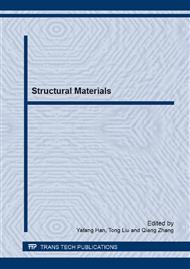p.573
p.580
p.588
p.593
p.598
p.604
p.608
p.613
p.617
Catalytic Mechanism of Dioctyldilauryltin on the Dealcoholized RTV-2 Silicone Rubber
Abstract:
Using dioctyldilauryltin as the catalyst, a series of RTV-2 silicone rubbers were prepared by applying tetraethoxysilane (TEOS) to hydroxyl terminated polydimethylsiloxane (HPDMS) matrix. The effect of the catalyst contents on the curing time of the silicone rubber was studied by SEM and FTIR methods. The results showed that the curing time decreased obviously with the increase of the catalyst contents and the rise of the temperatures. The mechanism was proposed here and revealed that when the catalyst transferring in the liquid silicone rubber meets Si-O-R of TEOS and Si-OH of HPDMS, it stopped and promoted the dealcoholization condensation reaction, which made the molecular chains of the silicone rubber crosslink. Therefore, under the action of catalyst, the vulcanization time of the RTV-2 silicone rubber is controlled by the velocity of condensation reaction itself and the diffusion of the catalyst in the liquid silicone rubber. The latter has the larger effect on the complete curing time.
Info:
Periodical:
Pages:
598-603
Citation:
Online since:
April 2014
Authors:
Price:
Сopyright:
© 2014 Trans Tech Publications Ltd. All Rights Reserved
Share:
Citation:


